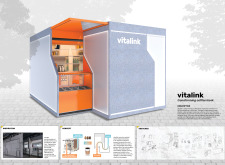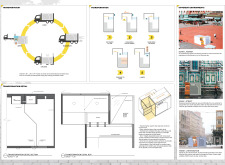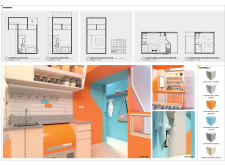5 key facts about this project
### Project Overview
Located in [Insert Geographical Location], [Project Name] integrates contemporary design principles within its specific environmental and community context. The aim of the design is to maximize user functionality while delivering a cohesive aesthetic that respects local cultural and architectural traditions.
### Material and Structural Composition
The design employs a diverse material palette to enhance both visual appeal and performance. Key materials include:
- **Brick**: Selected for its thermal efficiency and aesthetic quality, it aligns with the region's architectural heritage.
- **Glass**: Strategically used to increase transparency and facilitate a connection between indoor and outdoor spaces.
- **Concrete**: Provides structural strength while accommodating innovative design forms.
- **Wood**: Incorporated in specific areas, such as flooring and ceiling elements, to add warmth and tactile interest.
The building's structure features [describe key structural elements, such as height, number of stories, and distinctive design features], reinforcing its presence in the surrounding landscape.
### Spatial Strategy
The layout promotes interaction while respecting individual privacy. Significant spatial elements include:
- **Main Entrance**: A prominent facade opens into a spacious lobby, creating an inviting transition for users.
- **Residential/Workspace Areas**: Thoughtfully arranged to support both comfort and privacy, these zones cater to [define user demographic, e.g., families, professionals].
- **Outdoor Areas**: Landscaped gardens and terraces are integrated to foster social engagement and outdoor activities.
These choices reflect a deliberate strategy to enhance user experience through well-considered spatial organization.
### Sustainability Initiatives
[Project Name] demonstrates a commitment to environmental responsibility through various sustainable practices, including [specific initiatives such as green roofs, rainwater collection systems, or energy-efficient systems]. These features not only reduce the environmental footprint but also promote a sustainable lifestyle for its users.
In addition, the project considers climatic challenges, utilizing materials and design strategies that enhance resilience and efficiency in the local context.























































